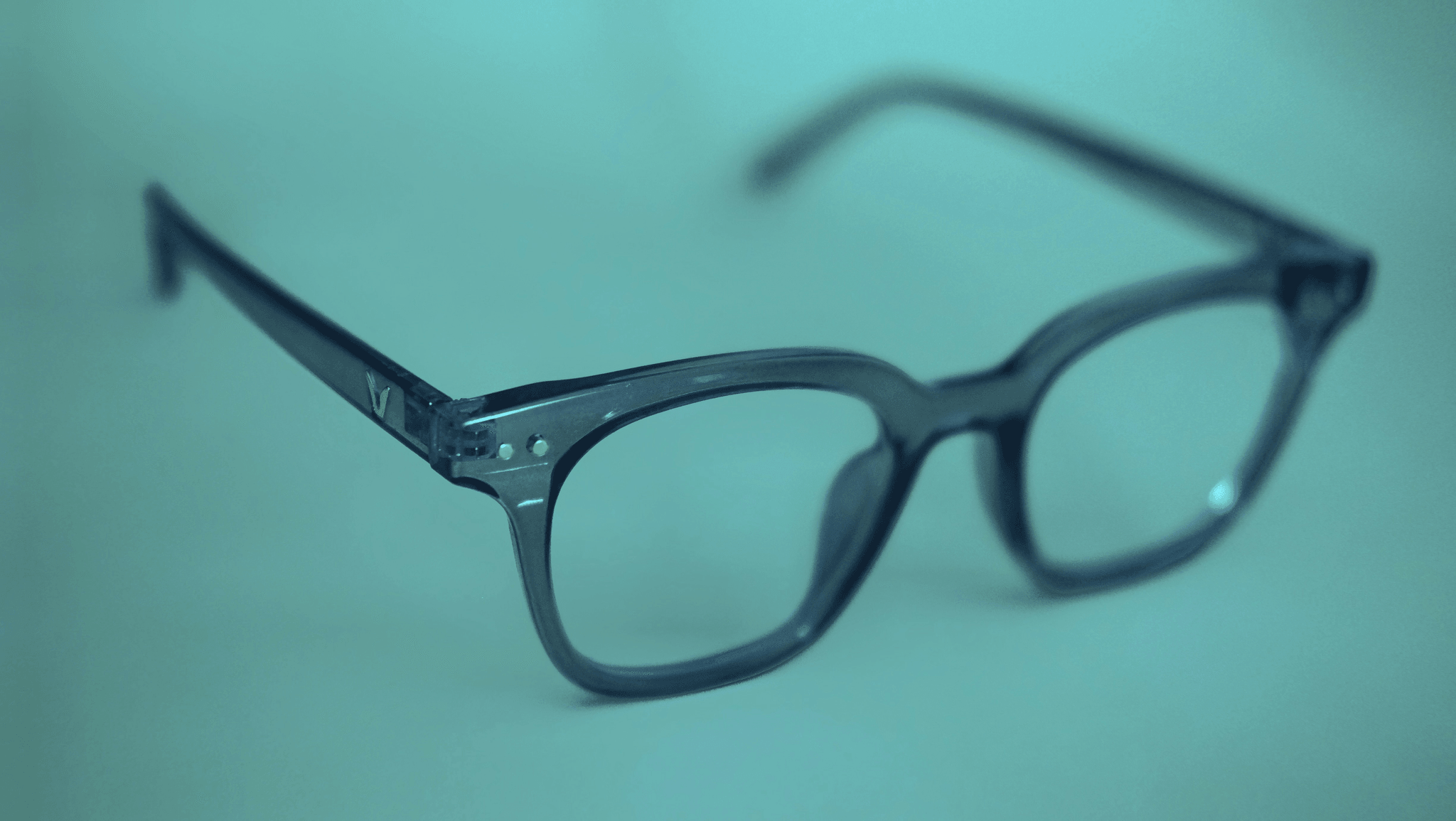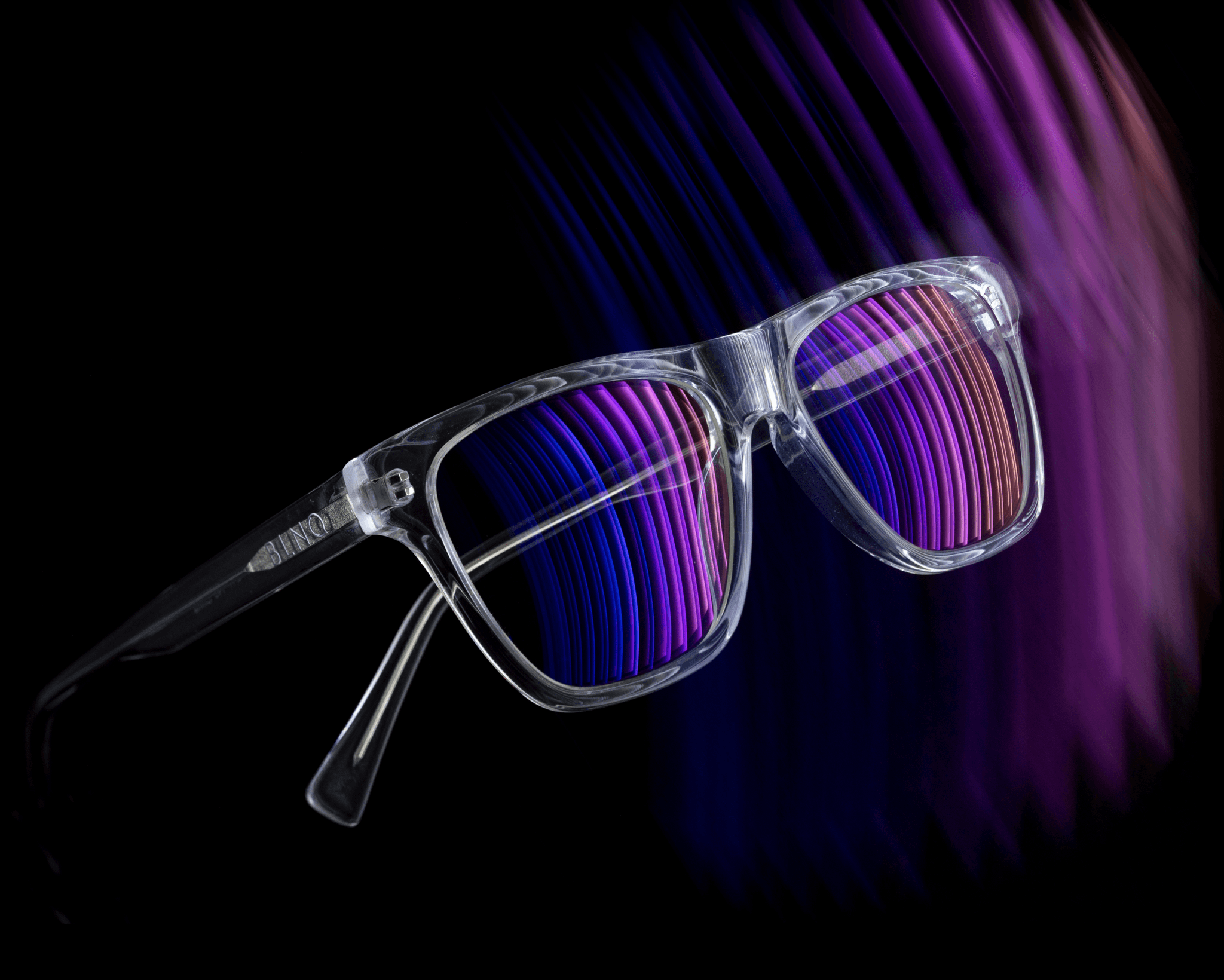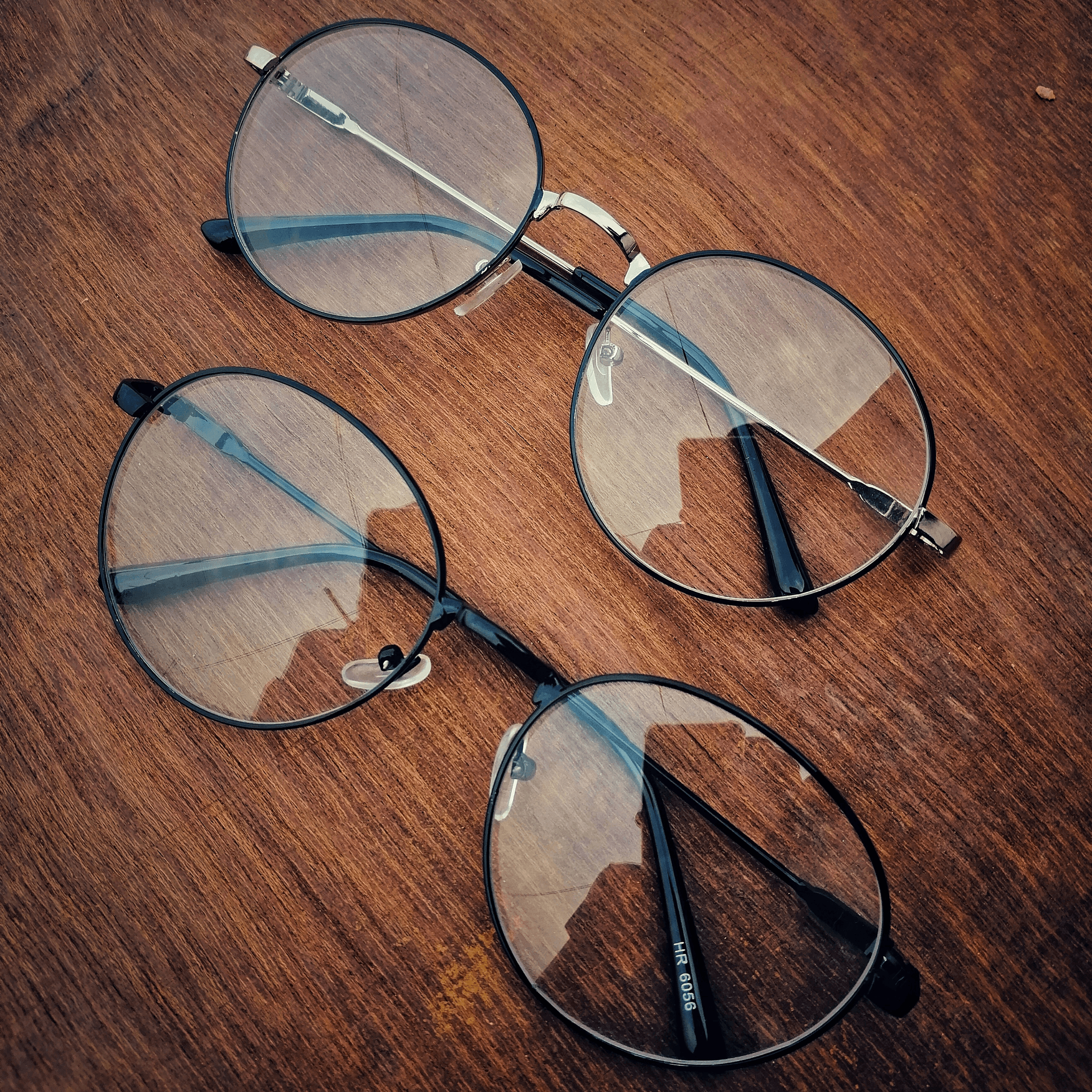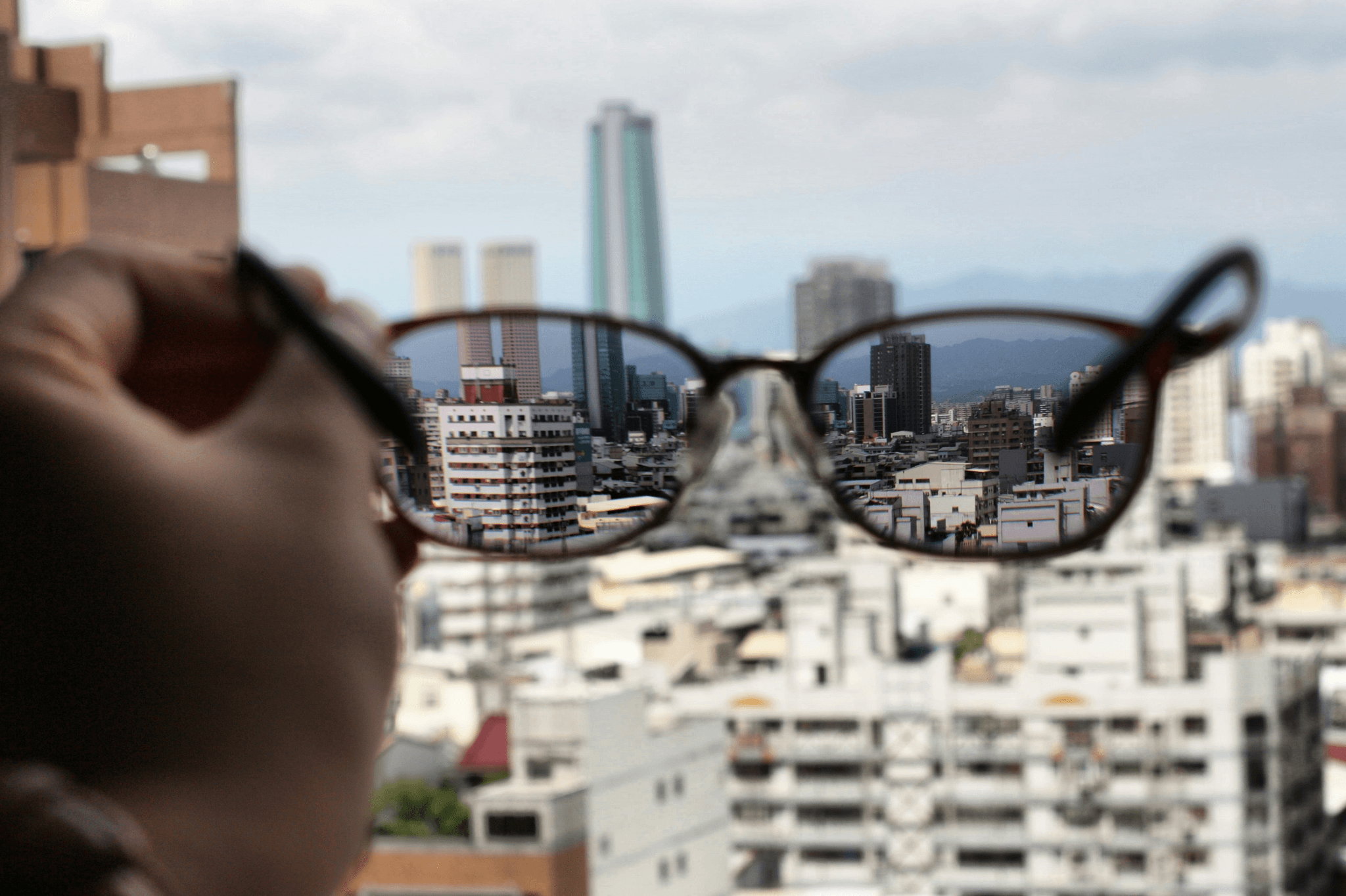Introduction

Vision is an essential part of our daily lives, and for many, corrective lenses play a pivotal role in enhancing sight. But how do lenses correct vision? Understanding the basics of vision correction helps us appreciate the science behind eyewear. From nearsightedness to astigmatism, various conditions can affect our ability to see clearly, making it vital to explore how lenses function to improve clarity.
The Basics of Vision Correction
At its core, vision correction involves adjusting the way light enters our eyes so that images are focused correctly on the retina. This is where lenses come into play—crafted from specific materials and designed with precise curvature, they alter light paths to enhance eyesight effectively. How do lenses correct eyesight? By bending light rays through refraction, they ensure that images appear sharp and clear.
Why Lenses Matter in Eyewear
Lenses are not just an accessory; they are the heart of effective eyewear solutions. The right pair can transform blurry views into crystal-clear experiences, allowing individuals to engage fully with their surroundings. When asking how is vision corrected with glasses?, it's essential to recognize that without properly designed lenses tailored to individual prescriptions, achieving optimal sight would be nearly impossible.
How Lenses Function to Enhance Sight
Lenses work by refracting light—bending it at specific angles so that it focuses directly on the retina rather than in front or behind it. Different types of lenses cater to various visual needs; for instance, bifocals assist those with both near and far sight issues simultaneously. So when pondering how do glasses help to correct people's vision?, remember that these ingenious pieces of technology are engineered specifically for enhancing our visual experience.
How Do Lenses Correct Vision?

Understanding how lenses correct vision is essential for anyone who relies on glasses or contacts to see clearly. The technology behind lens design has evolved significantly, allowing for tailored solutions that address various eyesight issues. So, how do lenses correct eyesight? Let’s dive into the science and mechanics of this vital aspect of eyewear.
The Science Behind Lens Technology
At the heart of lens technology lies the principle of refraction, which is the bending of light as it passes through different mediums. Lenses are crafted from materials that have specific refractive indices, allowing them to bend light in precise ways to focus images directly onto the retina. This means that when you ask, How is vision corrected with glasses? you're really tapping into a fascinating interplay between light and optics designed to enhance clarity.
The shape and curvature of a lens determine how it interacts with incoming light rays. For instance, concave lenses are used for nearsightedness (myopia) by diverging light rays before they reach the eye, while convex lenses assist those who are farsighted (hyperopia) by converging light rays to ensure they land correctly on the retina. Understanding this science helps demystify how do eyeglasses correct vision and why having an accurate prescription is crucial.
Types of Lenses for Different Vision Needs
When it comes to correcting sight defects, there isn’t a one-size-fits-all solution; different types of lenses cater to various visual impairments. Single vision lenses are designed for one field of vision—either distance or near—while bifocal and progressive lenses offer multifocal options for those needing assistance at varying distances. So, how are lenses used to correct sight defects? By providing tailored optical solutions based on individual needs!
Additionally, specialized lenses like photochromic or anti-reflective coatings can enhance comfort and functionality in different lighting conditions or environments. These innovations not only improve visual clarity but also protect your eyes from harmful UV rays or glare from screens—a must-have in today’s digital age! Knowing which type suits your lifestyle can answer questions like “How do glasses help to correct people's vision?” with confidence.
How Lenses Bend Light to Improve Clarity
Lenses bend light through their curved surfaces—this curvature determines whether they will converge or diverge incoming light rays effectively. When you wear eyeglasses equipped with properly designed lenses, they manipulate the path of light entering your eyes so that you see objects more clearly than ever before! This optical magic answers the question: How do lenses correct vision? by ensuring that images focus precisely where they should be on your retina.
Moreover, advanced lens technologies now allow manufacturers to create customized prescriptions based on individual eye measurements and preferences—making it easier than ever for people to achieve optimal visual acuity! Whether it's a simple pair of readers or complex multifocal glasses, understanding how these elements work together reveals just how transformative corrective eyewear can be in daily life.
Understanding Eyesight Issues

Vision is a complex process, and understanding common eyesight issues is crucial for effective correction. Many people experience various sight defects that can hinder their daily activities, making it essential to know how lenses correct vision. By exploring these defects and the solutions available, we can appreciate the role of corrective eyewear in enhancing life quality.
Common Sight Defects Explained
Common sight defects include nearsightedness (myopia), farsightedness (hyperopia), astigmatism, and presbyopia. Myopia causes distant objects to appear blurry, while hyperopia results in difficulty focusing on nearby items. Astigmatism leads to distorted vision due to an irregularly shaped cornea, and presbyopia typically affects older adults as their eyes lose the ability to focus on close objects.
Understanding these conditions helps clarify how do lenses correct eyesight? Each defect requires a specific lens type designed to counteract the unique challenges presented by that condition. For instance, concave lenses are often used for myopia, while convex lenses help those with hyperopia see clearly.
How Do Lenses Correct Eyesight?
Lenses work by bending light rays so they properly focus on the retina at the back of the eye. When light enters through a lens tailored for an individual's prescription, it alters its path to compensate for refractive errors in the eye's structure. This adjustment allows images to be projected clearly onto the retina rather than being blurred or distorted.
So how is vision corrected with glasses? The right prescription ensures that each lens effectively addresses specific eyesight issues by altering light's trajectory based on individual needs. By doing so, glasses help people regain clarity in their vision and enhance their overall quality of life.
The Role of Refraction in Vision
It refers to how light bends when it passes through different mediums—like air into glass or plastic lenses—changing its direction and focus point. Properly designed lenses take advantage of refraction principles to ensure that light rays converge precisely on the retina.
When discussing how are lenses used to correct sight defects? It's all about using refraction effectively! The curvature and material of each lens are meticulously chosen based on an individual's unique prescription requirements, ensuring optimal visual clarity throughout daily activities.
How Is Vision Corrected with Glasses?

Glasses are a widely used solution for vision correction, allowing many to enjoy clearer sight. Understanding how is vision corrected with glasses involves several key factors, including the accuracy of prescriptions and the selection of appropriate frames and lenses. By addressing these components, we can better appreciate how do lenses correct vision and enhance everyday life.
The Importance of Prescription Accuracy
One of the most critical elements in ensuring effective vision correction is prescription accuracy. An incorrect prescription can lead to discomfort, headaches, or even worsen eyesight issues instead of improving them. Therefore, knowing how do lenses correct eyesight hinges on having an up-to-date and precise prescription from an eye care professional.
When you visit an optometrist or ophthalmologist, they conduct thorough tests to determine your specific vision needs—this includes measuring refractive errors like myopia or hyperopia. This precision is essential because even minor discrepancies can significantly impact how well glasses help to correct people's vision. Ultimately, a well-fitted pair of glasses based on an accurate prescription empowers individuals to see the world clearly.
Choosing the Right Frames and Lenses
Selecting the right frames and lenses is equally important in achieving optimal vision correction through eyewear. The frame style must complement not only your face shape but also suit your lifestyle—whether you need durable frames for sports or fashionable ones for daily wear. Understanding how are lenses used to correct sight defects also involves recognizing which lens types best meet your unique visual requirements.
There are various lens options available today, such as single-vision lenses for nearsightedness or farsightedness, bifocals for those needing both near and distance correction, and progressive lenses that offer a seamless transition between different viewing distances. Finding the right combination ensures that you maximize clarity while maintaining comfort throughout your day-to-day activities. Remember that a stylish frame paired with high-quality lenses enhances both function and fashion!
How Do Glasses Help to Correct People's Vision?
Glasses work by utilizing specially crafted lenses designed to bend light in ways that compensate for individual eyesight issues—this is where understanding how do eyeglasses correct vision becomes essential! When light enters the eye through these corrective lenses, it refracts appropriately onto the retina, allowing clearer images to form in our minds' eye rather than distorted ones caused by refractive errors.
The science behind this process reveals why choosing suitable eyewear matters so much; without proper alignment provided by accurate prescriptions and lens designs tailored for specific conditions like astigmatism or presbyopia, one might struggle with blurred images or eye strain instead of enjoying crisp visuals! In essence, glasses not only enhance our ability to see but also contribute significantly to our quality of life by alleviating visual discomfort.
For those seeking innovative eyewear solutions beyond traditional options—Daposi stands ready to assist! Bringing Your Vision to Life: Beyond Eyewear, Beyond Expectations! 🌟 At Daposi, we are deeply committed to assisting our customers in developing new styles that truly stand out while ensuring their unique needs are met effectively.
The Evolution of Lens Technologies

The evolution of lens technologies has been a fascinating journey, reflecting humanity's quest for clearer vision. From rudimentary glass pieces to advanced digital designs, the story showcases how lenses correct vision in increasingly sophisticated ways. This progression not only improves aesthetics but also enhances functionality in eyewear.
Historical Advances in Eyewear
Historically, eyewear dates back to ancient civilizations where simple magnifying glasses were crafted from polished crystal or glass. These early inventions laid the groundwork for understanding how do lenses correct eyesight by bending light to assist those with visual impairments. Over centuries, innovations such as bifocals and progressive lenses emerged, significantly changing how is vision corrected with glasses and providing solutions for multiple sight issues.
The invention of the first pair of eyeglasses in the 13th century marked a pivotal moment in lens technology. These initial designs were rudimentary yet effective; they demonstrated the basic principles of refraction that would later inform more complex lens designs. As time progressed, advancements like tinted lenses for sun protection began to surface, showcasing a growing awareness of both function and fashion in eyewear.
Modern Innovations in Lens Design
Today’s lens technology is nothing short of remarkable, integrating cutting-edge materials and digital precision into everyday eyewear. Modern innovations have led to lightweight, durable options that not only improve comfort but also enhance clarity—proving that how do glasses help to correct people's vision goes beyond mere prescription accuracy. Features like anti-reflective coatings and blue light filtering are now commonplace, catering to our screen-centric lifestyles while addressing common sight defects.
Moreover, advancements such as 3D printing and customized prescriptions allow for personalized solutions tailored specifically to individual needs—ensuring that everyone can find their perfect fit when considering how are lenses used to correct sight defects. This level of customization means that wearers can enjoy both style and function without compromise.
How Are Lenses Used to Correct Sight Defects?
Lenses play a crucial role in correcting various sight defects by altering the path of incoming light before it reaches the retina. By understanding how do lenses correct vision through their unique shapes—concave for nearsightedness and convex for farsightedness—optometrists can provide precise prescriptions tailored to each individual's needs. This adjustment allows individuals with different visual impairments to achieve clearer sight through their glasses.
Additionally, specialized lenses address conditions such as astigmatism or presbyopia by employing advanced technologies like toric or multifocal designs respectively—further demonstrating how is vision corrected with glasses today involves more than just basic optics; it’s about enhancing quality of life through improved visual clarity. The ongoing research into lens materials continues to push boundaries on what is possible in eyewear correction.
At Daposi: Bringing Your Vision to Life! Beyond Eyewear, Beyond Expectations! 🌟 We pride ourselves on crafting innovative solutions that reflect your unique style while effectively addressing your vision needs.
Beyond Traditional Eyewear

As we venture beyond traditional eyewear, the landscape of vision correction expands to include innovative solutions like contact lenses and LASIK surgery. These alternatives offer unique benefits that address various eyesight needs, often providing more freedom and convenience than conventional glasses. Understanding how do lenses correct vision in these forms can empower individuals to make informed choices about their eye care.
Exploring Contact Lenses and Lasik
Contact lenses are a popular choice for those seeking an unobtrusive way to correct their vision. They work by conforming directly to the curvature of the eye, allowing for a wider field of view without the frames obstructing peripheral sight. On the other hand, LASIK is a surgical procedure that reshapes the cornea using laser technology; this method directly addresses how do lenses correct eyesight by permanently altering the eye's refractive properties.
Both options have their advantages—contact lenses provide versatility for active lifestyles while LASIK offers a long-term solution for those tired of glasses or contacts. However, it’s essential to consult with an eye care professional to determine which option best suits your needs and lifestyle requirements. Ultimately, understanding how is vision corrected with glasses versus these alternatives can help individuals find their best fit.
The Future of Vision Correction
The future of vision correction looks promising, with advancements in technology continually reshaping how we address sight defects. Innovations such as smart glasses equipped with augmented reality (AR) capabilities are on the horizon, potentially transforming not just how we see but also how we interact with our environment. As research continues into gene therapy and other cutting-edge solutions, it's clear that our understanding of how are lenses used to correct sight defects will evolve dramatically.
Additionally, personalized lens designs tailored specifically to individual visual needs are becoming more prevalent thanks to advancements in 3D printing and artificial intelligence (AI). This customization enables better alignment between corrective measures and personal preferences—further enhancing how do glasses help to correct people's vision effectively. The goal remains clear: improving quality of life through enhanced visual clarity.
Daposi: Bringing Your Vision to Life
At Daposi, we take pride in going beyond traditional eyewear solutions by offering innovative designs that resonate with individuality and creativity! Our slogan Bring Your Vision to Life encapsulates our commitment not only to stylish eyewear but also to supporting designers' unique concepts—from sustainability initiatives to bespoke styles that stand out in any crowd! We understand that every designer has a story; therefore, our team works diligently alongside you using professional production knowledge.
When you partner with us at Daposi, you're choosing tailored solutions that reflect your brand's unique vision while embracing cutting-edge production techniques for top-quality results! Whether it’s crafting custom eyewear or exploring sustainable materials for your designs, we're here every step of the way—making sure your ideas come alive beautifully! So why settle for ordinary when you can have extraordinary? Let’s redefine what eyewear means together!
Conclusion

In conclusion, eyeglasses are not just fashion statements; they play a crucial role in enhancing our vision. Understanding how do eyeglasses correct vision involves recognizing the intricate technology behind lenses and their ability to bend light precisely to meet individual eyesight needs. By addressing various sight defects, glasses become essential tools for clarity and comfort in daily life.
How Do Eyeglasses Correct Vision?
How do lenses correct vision? The answer lies in their unique ability to refract light, directing it onto the retina in a way that compensates for imperfections in the eye. Whether you’re dealing with nearsightedness, farsightedness, or astigmatism, the right pair of glasses can significantly improve your visual experience. By understanding how is vision corrected with glasses, individuals can appreciate the importance of accurate prescriptions and tailored lens designs that suit their specific needs.
The Impact of Corrective Lenses on Life
The impact of corrective lenses on life is profound; they enable millions to engage fully with the world around them. Imagine trying to read a book or navigate through a bustling city without clear sight—corrective lenses change all that! With advancements in lens technology and design, people can enjoy enhanced vision while also expressing their personal style through eyewear choices.
Why Choose Daposi for Unique Eyewear Solutions
When it comes to unique eyewear solutions, Daposi stands out as a leader in innovation and customization. Bringing Your Vision to Life: Beyond Eyewear, Beyond Expectations! 🌟 At Daposi, we are committed to helping customers create styles that make an impression while ensuring high-quality standards throughout production processes. With our dedication to sustainability and cutting-edge techniques, we transform your creative ideas into stunning realities—because everyone deserves eyewear that not only corrects eyesight but also showcases individuality.
